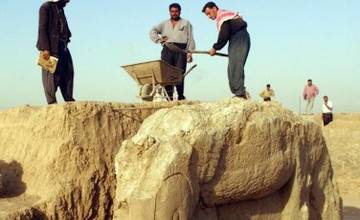‘Chhatrapati Shivaji Maharaj Katha’ at Patanjali University concludes
The narration of ‘Chhatrapati Shivaji Maharaj Katha’ being organised at Patanjali University on the ocassion of Chaitra Navratri, Ram Navami,…
Humans reached the tip of South America 14,000 years ago

Humans reached the southern cone of South America some 14000 years ago earlier than previously thought says a study based on ancient artifacts found at an archaeological site in Argentina.
Humans’ arrival in southern South America 14000 years ago may represent the last step in the expansion of Homo sapiens throughout the world and the final continental colonisation the researchers said.
Approximately 13000 years ago a prehistoric group of hunter-gathers known as the Clovis people lived in Northern America.
Advertisement
Previous research suggests that the Clovis culture was one of the earliest cultures in South America.
However the new research from the Pampas region of Argentina supports the hypothesis that early Homo sapiens arrived in the South America earlier than the Clovis hunters did.
The evidence for earlier human arrival in South Americas comes from a rich archaeological site in southeastern South America called Arroyo Seco 2.nbsp;
quot;The Arroyo Seco 2 site contains a rich archaeological record exceptional for South America to explain the expansion of Homo sapiens into the Americas and their interaction with extinct Pleistocene mammalsquot; the study said.
A group of scientists led by Gustavo Politis from Universidad Nacional del Centro de la Provincia de Buenos Aires presented the research in a new study published in the journal PLOS ONE.
At Arroyo Seco 2 the researchers excavated ancient tools bone remains from a variety of extinct species and broken animal bones containing fractures caused by human tools.nbsp;
They used radiocarbon dating to determine the age of the mammal bones and analyzed the specimens under a microscope.
The analysis revealed the presence of limb bones from extinct mammals at the site which may indicate human activities of transporting and depositing animal carcasses for consumption at a temporary camp.
The bones of some mammal species were concentrated in a specific part of the site which could indicate designated areas for butchering activities.nbsp;
Microscopic examination also revealed that some bones contained fractures most likely caused by stone tools.
The remains were dated between 14064 and 13068 years ago and the authors believe that Arroyo Seco 2 may have been occupied by humans during that time.
This timeline along with evidence from other South American sites indicates that humans may have arrived in southern South America prior to the Clovis people inhabiting the Americas but after the onset of the Last Glacial Maximum the last glacial period which took place 19000 to 20000 years ago the researchers said.
Advertisement